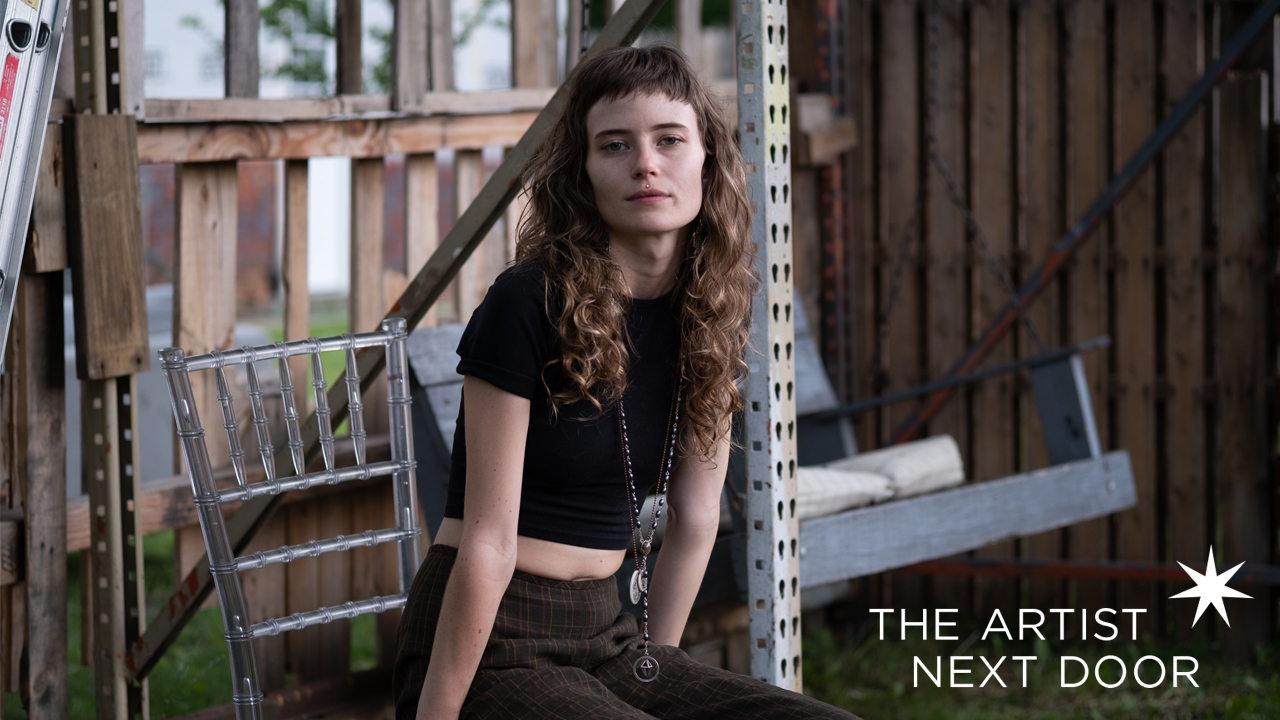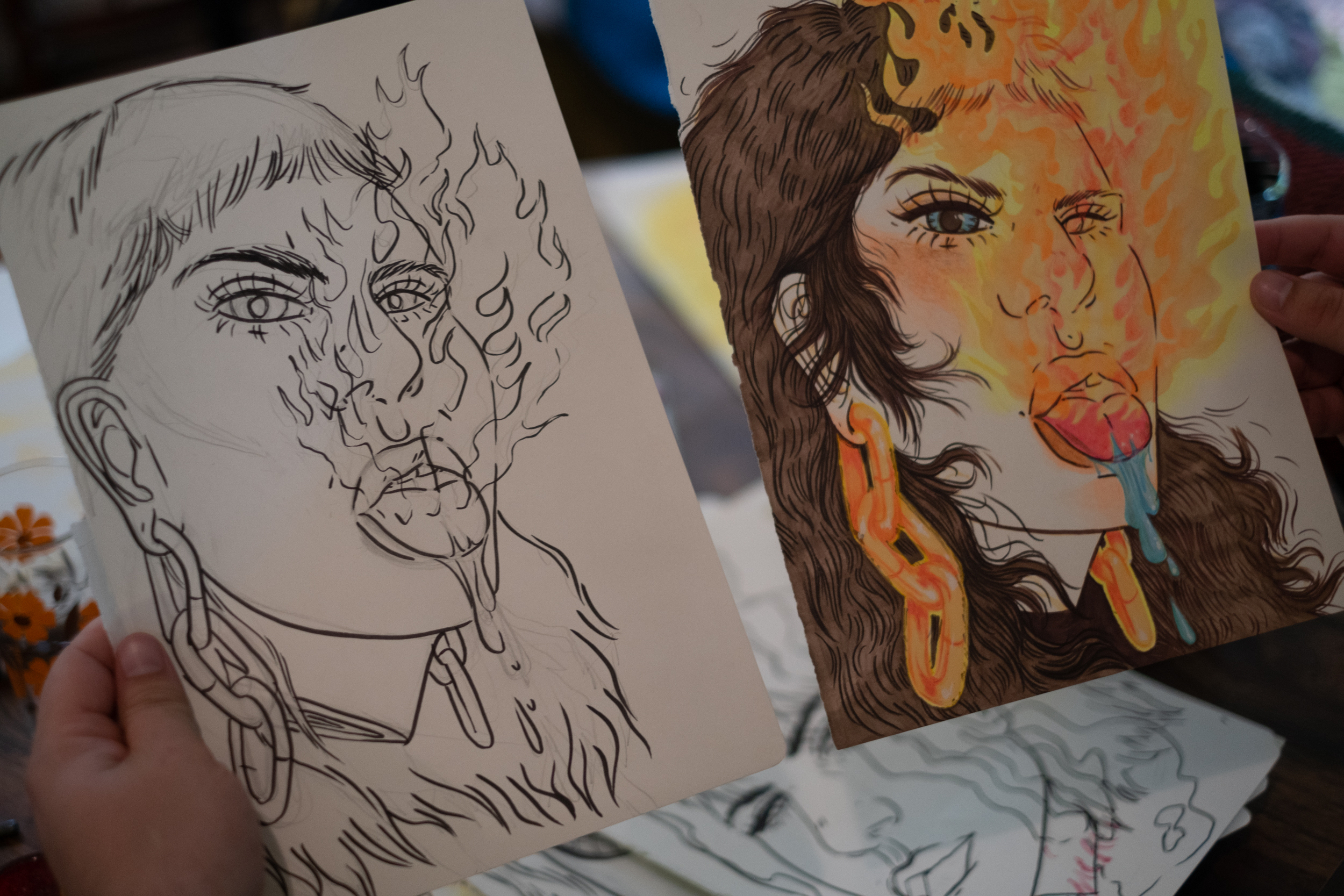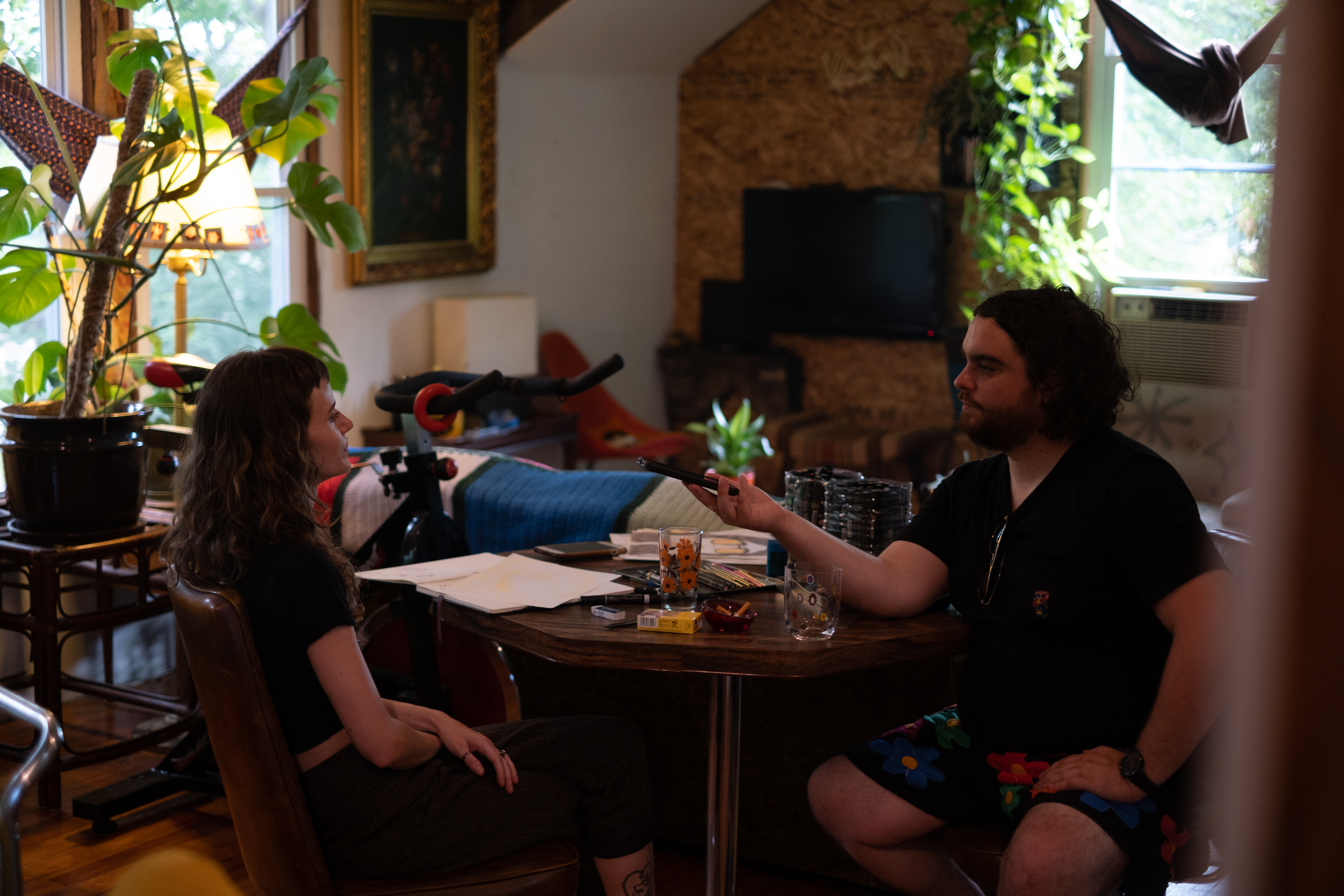Allison Scout Waite Helps Others Find Vulnerability and Identity in Her Self-Portraits
In her Highland Park compound that doubles as her studio, Allison Scout Waite is turning her self-portraits into larger explorations of symbolism around gender identity and vulnerability.

The Artist Next Door illuminates and celebrates Detroit area artists from a variety of cultural backgrounds and disciplines to enhance awareness and understanding of our communities and cultures.

An artist like Allison Scout Waite is tough to put in a box.
“I am a painter, an artist, a dancer … pretty much a jack of many art trades,” says Waite, sitting in her studio/living space in Highland Park.
But she’s always been sure of her artistic ambitions since a young age.
“I’ve been drawing and painting my whole life,” says Waite. “There’s never really been a time when I really thought I’d do anything else.”
As part of WDET’s Artist Next Door project, Waite sat down for a Q&A with CultureShift’s Ryan Patrick Hooper to talk about the symbolism within her artistic practice, using her own likeness to inform her paintings and drawings, and the sense of empowerment she hopes to bestow on the viewer with her work.
Ryan Patrick Hooper: Considering you’ve been drawing and painting your whole life, were your parents supportive of you choosing a career in the arts?
Allison Scout Waite: They were supportive of my art in a way that they would be like, “Oh, that’s cool! You made that! Wow!” But when I decided to major in it in college, they were not supportive of that decision but they couldn’t steer me in any other direction. Now, at this time, there’s a lot of art that I just don’t even show them because they just read it in such a different way than my peers might.
What would be examples of work that you wouldn’t want to show your parents?
A lot of nude pieces for sure. It’s kind of hard to show them a lot of my portraits because they always say things like, “You used to draw smiling people all of the time! Your work seems so angry and sad now.” I don’t see it that way. I see it as a very powerful thing, so it’s very frustrating to get that kind of feedback about it.
Let’s talk about what you’re focused on right now when it comes to symbolism, medium and aesthetic.
I’ve been very focused on imagery of chains and locks right now. Thinking about the ways that when you look at someone, what are they chained to? What do you chain yourself to? You know, these connotations that maybe people have of you — the chains that surround us and how to break them or harness a power that once you understand all these oppressive forces … how to work within those to be powerful still.

I’m picking up on a lot of perceptions. Your parents look at your artwork, they see one thing that you don’t agree with. You’re talking about what people could be chained or locked to and what it could necessarily project about them.
Yeah, definitely. There’s also ideas of gender, too. My work is self-referenced. It’s all femme-presenting subject matter, but at the same time, you don’t really know anything about anybody. We’re all just making assumptions about people and we just don’t really know.
What assumptions do you think people make about you as an artist or when they see you?
That’s a good question. Probably that I’m a little bit weird and that I must be very comfortable making myself look somewhat foolish in public, but I’m fine with that. And it’s probably true. (laughs)

As an artist, what are you hoping people walk away with after they see your artwork if that concern of perception is so present?
I’m hoping that some people walk away with a feeling of solidarity and a feeling of power. I’m hoping other people walk away asking questions, thinking about it and trying to understand it without assuming they know anything about it.
Who do you want to walk away with a sense of power, and what does that mean?
Definitely other femme people, other queer people. People who have felt powerless at some time. That just means a sense of inner power because to show someone a subject of a painting looking so vulnerable and raw in such a large way … I think that can help people own their own vulnerability and rawness.
Related: Meet WDET’s Artists Next Door
Sign-up to stay up to date on Artist Next Door:
Trusted, accurate, up-to-date.
WDET strives to make our journalism accessible to everyone. As a public media institution, we maintain our journalistic integrity through independent support from readers like you. If you value WDET as your source of news, music and conversation, please make a gift today.
